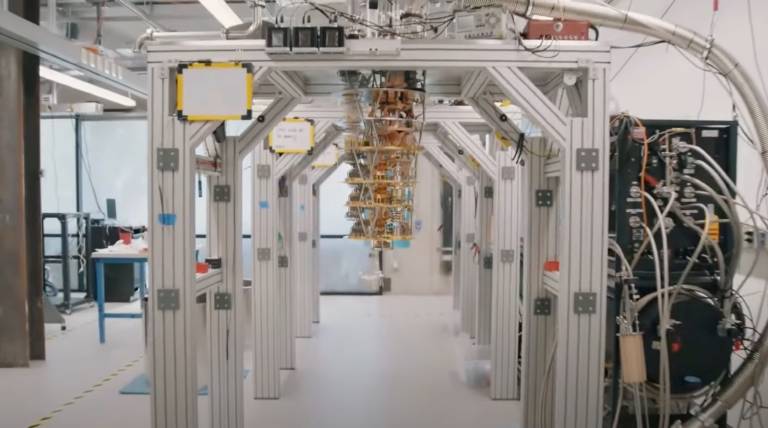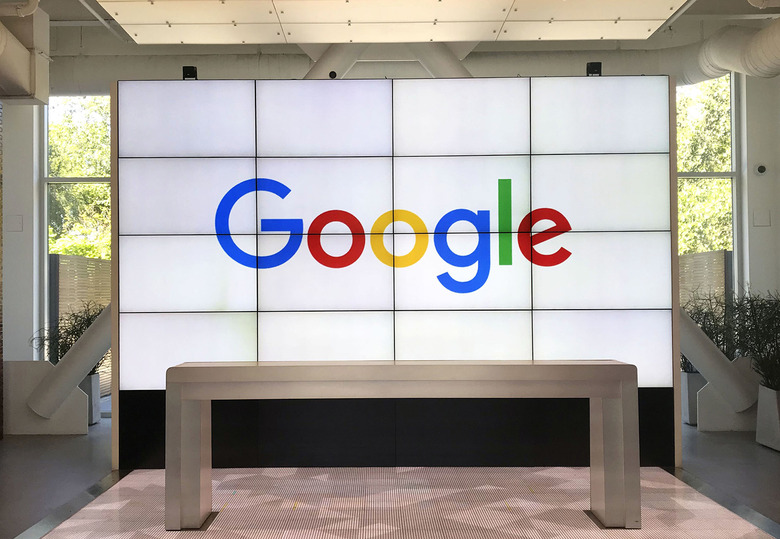Google's Time Crystal Discovery Is So Big, We Can't Fully Comprehend It
Forget Google Search and Fuchsia. Researchers from Google, Stanford, Princeton, and other universities might have made a computer discovery so big we can't fully comprehend it yet. Even Google researchers aren't entirely sure that their time crystal discovery is valid. But if it turns out to be accurate, then Google might be one of the first companies to give the world a crucial technological advancement for the future. Time crystals will be an essential building block in quantum computers, the kind of computers that can solve complex problems with incredible speed and power technologies that aren't even invented.
What is a quantum computer?
Google isn't the only company building quantum computers, and these types of machines keep popping up in the news with regularity. Quantum computers won't reach your phone, and they're not going to play games. Even if they did, Nintendo will totally ignore the latest computer technology when designing future consoles.
As The Next Web explains, we plan on using quantum computers for challenging problems. Examples include warp drives that could make fast interstellar travel possible. And medical technology that could cure virtually any disease.
Google partnered with Michael Peña for a quantum computing demo at I/O 2021 earlier this year:
But quantum computers are really hard to build, maintain, and even use. That's where Google's time crystals might come into play. As it stands now, quantum computers feature qubits, computer bits in the quantum world. These qubits act differently when someone observes them than when they're left alone. That's what makes it difficult to measure qubit states. And that instability makes using a quantum computer problematic. That's where time crystals come in.
Google’s time crystals
Theorized in 2012, the time crystal concept is a new phase of matter. The Next Web explains that time crystals contradict one of Sir Isaac Newton's famous laws. The first law of motion says that "an object at rest tends to stay at rest and an object in motion tends to stay in motion."
In our universe, there's something called high entropy (disorder). Something always happens thanks to energy exchanges. Entropy remains the same if there are no processes but increases in their presence. But that's not valid for time crystals. They can maintain entropy even when they're used in a process.
To understand Google's time crystals, The Next Web offers a great analogy with snowflakes. They have unique designs, as the atoms are arranged in specific ways. Snow falls, melts, water evaporates, and then it'll eventually become snow again. All these processes involve energy exchanges. A time crystal would be like having a snowflake that can change between two configurations back and forth with no energy usage or energy loss. Time crystals can have their cake and eat it too, and they can do it perpetually.

Inside a Google quantum computer.
What does it mean for you and me?
Google's time crystals do not belong to Google. Even the Google team doesn't know for sure that it has created them. The research is only available in a pre-print version as it awaits validation from peers.
But if Google did find a way to make them, then next-gen quantum computers might come with time crystals inside. Anyone might be able to create these computers. And they'd bring quantum coherence to a place where there's a lot of decoherence — those restless qubits from before.
Even so, we're still in the super early stages of creating quantum computers with time crystals. Google might have proved that time crystals aren't just theoretical, but it certainly hasn't created any.
We might need decades of quantum computing research to create quantum computers with time crystals in them to build warp drives or discover "universally effective cancer treatments." And we'll undoubtedly need decades to understand quantum computers and time crystals properly. Google's paper is available at this link. Moreover, Quanta Magazine also has a thorough roundup of Google's discovery, complete with an animation of a time crystal.
